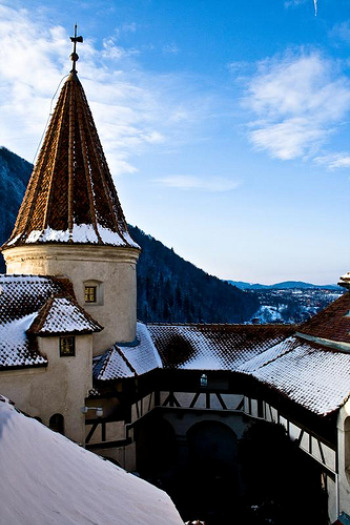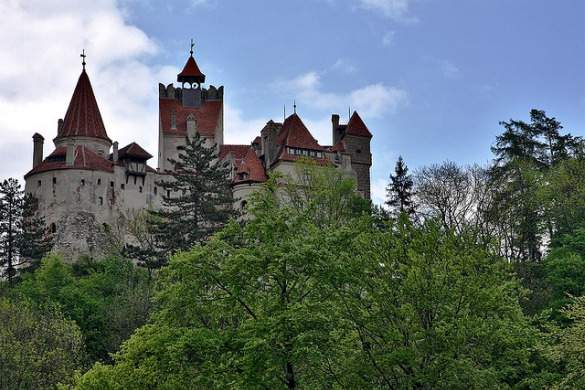How many times on Halloween did we kids dress up as Dracula, the blood sucker? We dressed in black with a black cape draped on our backs and the final touch was the false plastic canine fangs in our mouths and a bit of red around our lips. How many times have we curled up in fright in the movie theater and we saw the actor Bela Lugosi as Dracula bending down to take a nip of flesh and draw from the neck of a beautiful damsel a few drops of blood?
According to tradition and legend, a vampire is a person who does not die, an “un-dead,” whose corpse rises from the deep dark tomb of the dead at night and roams the nearby area to seek to suck the blood of the living. Then the vampire must return to the grave at dawn. Varied cursed persons can be classified as a vampire upon their demise – excommunicated and people that weren’t baptized, criminals, wizards, witches, magicians, and the seventh son of a seventh son.
Of course there are various means for one to protect oneself against vampires. Driving a sharp stake of ash or aspen wood through the heart during the daylight hours will kill one; the vampire’s body should then be burned or reburied at a crossroads. Vampires do not like garlic and a necklace worn about the neck can ward off potential vampires; also vampires dislike mirrors and silver, so silver crosses or icons were frequently displayed in houses or on one’s article of clothing for protection.
Bram Stoker’s book about the vampire Count Dracula is based on the real 15th century’s Prince Vlad Dracula of Wallachia, now Romania. When Stoker’s frightening novel “Dracula” was published in 1897, Count Dracula was born in all its horror, becoming a literary and cinematic icon in the 20th century and beyond. According to legend and lore Prince Vlad’s nickname was “Vlad the Impaler,” in honor of his choice of impalement in order to torture and execute his enemies. Bram Stoker’s literary acumen transformed Prince Vlad’s blood lust in battle into Count Dracula, the blood-sucking vampire as we know it today.
It was time to meet this monster at Transylvania and so we toured for ten days that appealing Balkan country. It could be a bit frightening for some to visit Count Dracula’s site, but for my wife and me, the count enabled us to have a fine and interesting holiday. Now for a Transylvania Dracula Tour – of course there are many tour operators in Romania that offer six to ten day travel tours of Romania that includes a visit or a stay at Count Dracula’s Bran castle.
 Bran Castle is referred to as “Dracula’s Castle” (although it is one among several locations linked to the Dracula legend, including Poienari and Hunyad Castles). Tour operators tout the site as the home of Count Dracula as written in Bram Stoker’s novel – just to add a bit of fright to the participants of the tour.
Bran Castle is referred to as “Dracula’s Castle” (although it is one among several locations linked to the Dracula legend, including Poienari and Hunyad Castles). Tour operators tout the site as the home of Count Dracula as written in Bram Stoker’s novel – just to add a bit of fright to the participants of the tour.
The interesting castle is now a museum open to tourists, displaying artifacts (furniture, ceramics and silvery) and fine art (sculpture and wood paintings); of great interest is the collection of white weapons and fire arms, underlining the military purpose fulfilled by the Bran Fortress in the Middle Ages. The collection of decorative art within the castle would be of interest to the visitor, who can see the interior of the castle on their own or by a guided tour.
At the foot of the hill leading to the path to the castles is a small open air museum park exhibiting traditional Romanian peasant structures – cottages, barns, etc.. The scenic surrounding country side is quite beautiful and a visitor can have an exquisite view from the upstairs balcony at Bran Castle.
The country of Romania has much to offer aside from Dracula tours, so why not treat yourself to a real holiday in Romania? Romania is a charming and energetic country with lots to offer visitors, including the ancient Romanian historical monuments, the renaissance and scenic beauty of the land, fashionable metropolis cities to cater your interest and needs or to take a cruise through the myriad channels of the Danube Delta, one of the world’s greatest wildlife sanctuaries.
The striking landscape offers rich culture and medieval flair that continue to invoke interest in richness of the customs of Romania. A Eurail Romania Pass can help you to explore the folklore, myths and legends that fill this mysteriously wonderful country. Travel from one castle to the next, some will leave you with goose bumps, others with beautiful scenic views.
Photos by Horia Varlan, Cristi B
